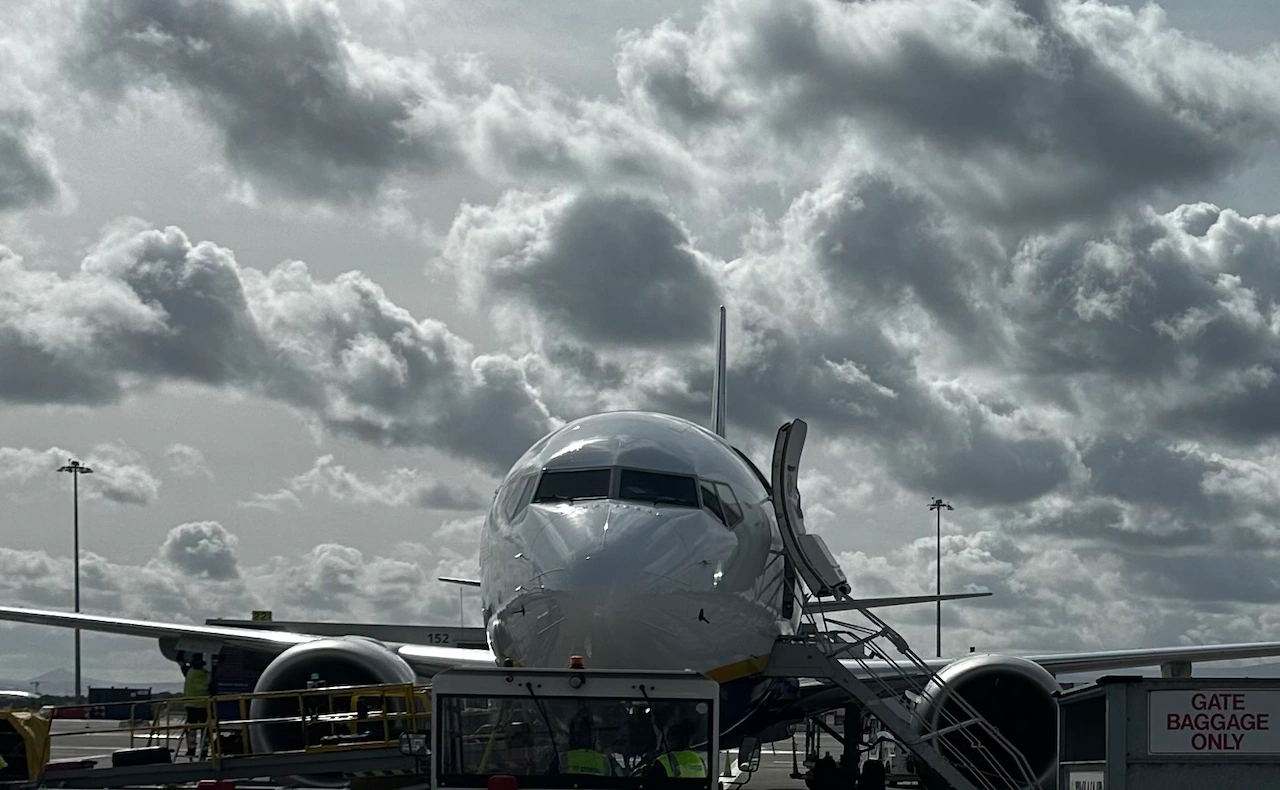Copyright The Atlantic

On April 28, 1986, the Soviet news program Vremya made a 14-second announcement about an accident at the Chernobyl nuclear power plant in Ukraine. One of the plant’s nuclear reactors had been damaged, the broadcaster said. Mitigation actions were being taken, aid to those affected was being provided, and a government commission had been formed. The rest of the Soviet Union hummed along, making plans for the upcoming May Day holiday. Although I lived just 100 miles from the border with Ukraine, it took me three months to begin attaching faces and names to the incident. I was vacationing with my mother near Sochi, on the Black Sea, when a group of women and children entered our hotel. They were Chernobyltsy, “people of Chernobyl.” They had a startled air around them, and the mood in the hotel became tense: Most vacationers wanted to avoid the “radioactive” intruders. I was too young to be afraid, so I befriended a girl named Katya, a 5-year-old with remarkable dimples. In the years that followed, as perestroika and glasnost revealed the scale of Chernobyl, I kept thinking about Katya, with whom I had played so obliviously on that pebble beach. Where did she go after that summer? Did she manage to stay healthy? Did she even get to grow up? Decades later, the German historian Melanie Arndt set out to answer the same questions about kids like Katya. Her book Chernobyl Children, translated by Alastair Matthews, is a pioneering history of the event that focuses on what happened to its children by tracing an ongoing disaster that stemmed from the world superpowers’ race for technological supremacy. After the accident, as Arndt demonstrates, the children of Chernobyl were failed by a state that prioritized its image over their safety, but aided by people around the planet who were waking up to their shared vulnerability in a post-industrial world. Born in a country that would soon vanish off the map, these children became accidental trailblazers of a new global condition: life in the shadow of catastrophes that cross borders and don’t end when news cameras move on. The word disaster suggests the inevitable, yet Chernobyl was anything but. In its three years of operation, the reactor that exploded, No. 4, had suffered numerous malfunctions and partial shutdowns, which were ignored by a typically bungling Soviet bureaucracy. A competition to outdo the United States in nuclear capacity had spurred the construction of power plants at a breakneck pace. Ukraine alone hosted four, despite its abundant energy from rivers and coal fields. Government leaders pushed a “peaceful atom” propaganda campaign, which cast nuclear power as a safe, advanced source of electricity and a pillar of Soviet prestige. Just months before the catastrophe, a Ukrainian minister estimated the chance of a meltdown to be once every 10,000 years. Then on the night of April 26, a late-night safety test at Chernobyl went terribly wrong, resulting in two explosions that blew apart the reactor’s core and set off a radioactive blaze that burned for days. The blast released as much radiation as 500 Hiroshima bombs, contaminating tens of thousands of square miles and exposing millions of people. About 3 million of those victims were children. The U.S.S.R. hailed children as the “only privileged class.” They smiled happily from television screens and propaganda posters—symbols of a bright Communist future—and were promised carefree childhoods. Yet, as Arndt shows, they fared poorly after the accident. Pripyat, an atomgrad (or “nuclear town,”) built to serve the Chernobyl plant, went about its normal business for hours after the explosion; children were pushed in strollers by unsuspecting parents and played soccer in already contaminated streets. Although officials were at the plant the next morning, taking stock of the situation, the evacuation of Pripyat’s population did not begin until a day and a half later. That initial delay, which resulted from confusion about the scale of the incident and the authorities’ decision to downplay it—ostensibly to avoid panic—was only the first in a chain of fatal mishandlings. With radiation readings so high they had triggered alarms in countries as far away as Sweden, mandatory May Day demonstrations across the U.S.S.R., including in contaminated areas, went on as planned. Children were sent to wave balloons and flags in air thick with radioactive dust. For thousands of kids, those early days of inadequate response would lead to what Arndt calls “living in prognosis”: a childhood defined by constant medical testing and a lingering fear that sickness could surface at any time. Many of their fates came down to the decisions of local officials in the days after the incident. In Kyiv, for instance, schools closed weeks before the normal end of the school year. Valentyna Shevchenko, then chairwoman of the Ukrainian Supreme Soviet, made a unilateral decision to evacuate 700,000 people, breaking with the party recommendations—and likely saving many lives. Beyond evacuations, the Soviet state had little to offer. To save face, authorities initially rejected help from the United States and Western Europe. Instead, Arndt writes, school-age children from the immediate vicinity were separated from their parents and shipped to summer pioneer camps—state-run recreational facilities meant to instill patriotism—for what officials called “the betterment of health.” Mothers of young children, like Katya’s, were eligible to receive vouchers for month-long stays at sanatoria and tourist bases across the U.S.S.R. (Fathers were not considered.) These arrangements barely lasted through the summer. Only a handful of flagship pioneer camps were open year-round; many children had to return to areas that had been superficially decontaminated. There, each child would receive an extra pair of indoor shoes, to prevent them bringing radioactive matter into the classrooms, along with a largely useless warning to avoid local food and drink. Many lived in homes without electric stoves, leaving them to burn contaminated wood. Arndt documents how, in the years following the accident, medical commissions collected data on the effects of radiation but offered almost no treatment or guidance. Meanwhile, the incidence of thyroid and blood cancers among children rose—in one hospital in Minsk, the number of leukemia patients almost doubled from 1986 to 1990. In another town in Russia, Arndt writes, doctors and nurses felt that the children they were caring for were “exploited and abandoned.” According to a letter they sent to Mikhail Gorbachev, “every second child suffering from dizziness, stomach, joint and bone pain”—symptoms officials refused to link to radiation exposure. Having rejected help from its Cold War adversaries, the party left children at the mercy of a health-care system crippled by shortages of specialists, modern equipment, and effective drugs. When radiation-contamination maps were made public in the winter of 1989, the disintegrating Soviet regime belatedly created the State Chernobyl Children Program, which aspired to tackle the “unwelcome effects of Chernobyl” by funding the construction of recovery centers, buying medical equipment, and conducting radiation research. But by then, many children had already gotten sick. Some would not live to see adulthood. In Belarus, where roughly 70 percent of the radioactive fallout settled, Arndt credits successful aid efforts to activists and parents who mobilized to protect their children. Groups such as the Belarusian nongovernmental organization For the Children of Chernobyl, founded in 1990, drew global attention. Appalled by what they saw in private visits and on TV, European and American charities, philanthropists, doctors, and religious organizations sent large amounts of humanitarian supplies beginning in the early ’90s. They also funded trips for children to recover in hospitals, camps, and private homes abroad. Arndt shows that this act of global empathy was rooted in something deeper than pity for a former enemy: an understanding of humanity’s shared peril. Chernobyl’s children became emblems of a borderless world—and a future in which disasters aren’t confined to a single place. We now seem to fully inhabit that era, one defined by pandemics such as the coronavirus, climate disasters, and new technologies whose promises carry their own dangers. These crises may arise in one country or another, but in many cases, their consequences are global, and they cannot be solved by any single group or government alone. The stories of individual children give Arndt’s account its poignancy. She writes about 7-year-old Vova Malofienko, who was flown by an American aid organization from a Kyiv cancer hospital to a Connecticut camp for seriously ill children. Tatsiana Khvitsko, born without lower legs, was rescued from a Belarusian home for disabled people by an American charity and fitted with prosthetics; she ran her first marathon in 2018. Some children who went abroad for treatment never returned. One girl’s refusal to go back to her grandmother’s crumbling house after living in a homestay in California even prompted Alexander Lukashenko, Belarus’s authoritarian president, to suspend programs that sent sick children to the U.S. for recuperation. After a brief post-Soviet respite, nationalist face-saving was again putting children in harm’s way. Chernobyl Children is not just a story of ruined childhoods; it is also a portrait of life in the Anthropocene. Arndt’s book shows how present the disaster remains, even almost 40 years later. Nearly 5 million people still live on contaminated land, where the radioactive earth is a part of daily existence. Alena Oginets, whose story bookends Arndt’s account, was 12 at the time of the explosion; she evacuated and grew up elsewhere. The daughter of a Chernobyl plant worker who died at 50, she remembers Pripyat as a vibrant, modern town surrounded by picturesque marshes and forests. When she returned two decades later, all that remained in her looted apartment was a bathtub that couldn’t fit through the door. The forest of her childhood is now roamed by wild boars. Pripyat will remain uninhabitable for centuries, as will the rest of Chernobyl’s 30-kilometer exclusion zone. In 2022, a drone captured images of Russian troops in a Chernobyl forest, whose pines were still orange-red from the blast. The first footage of the invasion itself came from a Chernobyl tour company’s checkpoint camera, which happened to record the advancing columns. Just as in 1986, tragedy came to Ukraine from a regime consumed by the country’s greatness. Arndt’s book isn’t without shortcomings: Its narrative is dry and confined primarily to Belarus, where she worked in the ’90s. It also stops short of asking why, given the scale of suffering, there has been hardly any attempt at real redress through lawsuits or settlements. Yet Chernobyl Children is an astute and thought-provoking work, connecting the unfinished past to a present and future in which disasters travel faster and wider. It shows the pitfalls of blind faith in technological progress—and the human cost of a quest for dominance devoid of responsibility.



